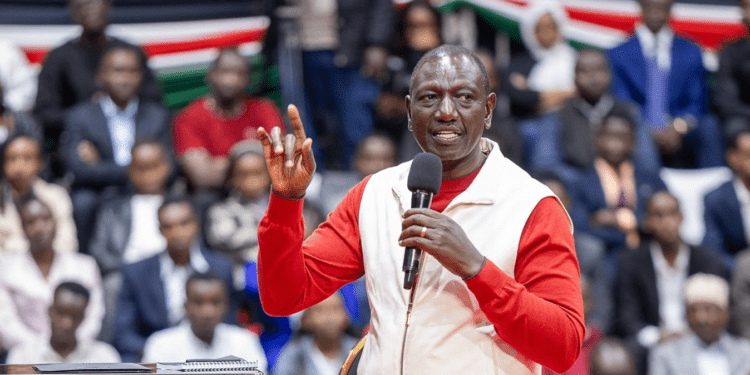The Kenyan government has rolled out a significant overhaul of its university funding system, aimed at addressing deep-rooted financial challenges while ensuring fair and equitable access to higher education for all students.
President William Ruto, speaking at a town hall meeting with university students in Nairobi, provided a detailed explanation of why these sweeping reforms were necessary, shedding light on the dire financial state of public universities and the pressing need for change.
“We had to act,” Ruto stated, revealing that 23 out of the country’s 40 public universities were on the verge of bankruptcy when he assumed office. This stark reality prompted the government to introduce a new student-centered funding model, replacing the old system that Ruto described as unsustainable and inequitable. “The old model was almost destroying our education because it assumed all courses were the same and that the government could pay 80% for everybody, which it could not,” he explained.
The revamped funding model, which increases the annual budget for universities from KES 45 billion to KES 82 billion, is designed to allocate resources more effectively by focusing on students’ financial needs. A key feature of the new system is the introduction of a banding mechanism that categorizes students into different financial bands, with those in the most vulnerable category receiving up to 95% of their education costs covered by the government through a mix of scholarships and loans.
Ruto emphasized the critical role of the loan system in sustaining the education sector, pointing out that his own ability to attend university was made possible through a government loan. “The loan is part of what sustains this. If I didn’t pay my loan, possibly you couldn’t get a chance to learn,” he said, highlighting the necessity of student loan repayments in maintaining the funding model.
Despite these measures, concerns have emerged from students about the fairness and implementation of the new model. A representative from the University of Nairobi questioned whether the banding system accurately reflects the financial realities of all students. In response, Ruto defended the system as a more realistic and equitable approach compared to the previous model, which he argued was financially untenable and failed to address the specific needs of students from different backgrounds.
The town hall discussion also brought attention to the broader social impacts of delays in university admissions, particularly for young women. “Many of the girls had gotten pregnant by the time they were going to university after waiting for two years,” Ruto remarked, highlighting the unintended consequences of inefficiencies in the previous system. This, he said, was one of the reasons the government was committed to ensuring that students could access higher education in a timely manner under the new model.
However, not all students are convinced that the new system is equitable. A student from Africa Nazarene University, a private institution, expressed frustration over the exclusion of private university students from the scholarship component of the funding model. “Is it that the scholarships are being offered to the universities or to the students?” she asked, reflecting a broader concern about perceived inequalities in the allocation of government resources.
Addressing these concerns, Ruto reiterated that while the government’s priority is to secure the financial stability of public universities, there is recognition of the need to support students across all institutions. He acknowledged that the exclusion of private university students from scholarships is a valid concern and hinted at possible future adjustments to the system.
Transparency in funding allocation has also been a contentious issue. Students voiced their frustrations over delays in receiving their allocated funds, which in some cases prevented them from taking exams or accessing essential university services. This has raised questions about the effectiveness of the new model’s implementation and the government’s ability to ensure timely disbursement of funds.
Amid these challenges, Ruto called for a collaborative approach to solving the issues facing Kenya’s higher education system. “Let us solve it together… we can do it together,” he urged, emphasizing the importance of cooperation between the government, universities, and students in refining and improving the funding model.
The discussion also touched on the government’s efforts to expand access to technical and vocational education, which has seen significant growth in enrollment. “From 20,000 to 30,000 students in our TVETs, we today have 700,000 students,” Ruto noted, indicating a shift towards skill-based education as a critical part of Kenya’s development strategy.
Despite the hurdles, Ruto expressed optimism that the new funding model would eventually lead to a more sustainable and equitable higher education system in Kenya. He assured students that the government is listening to their feedback and is committed to making necessary adjustments. The ongoing appeals process, through which over 26,000 students have requested reclassification in the banding system, demonstrates the government’s willingness to adapt the model based on input from those it affects.
“We are doing our best,” he said, urging students to continue engaging with the government to ensure that the new model fulfills its promise of providing equitable and sustainable education for all.


















